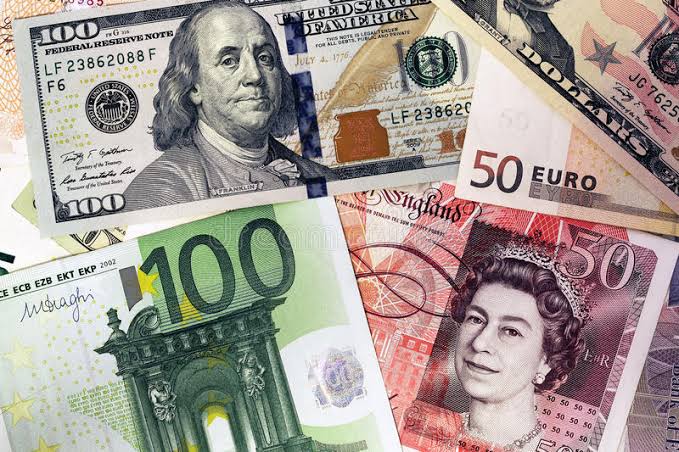VOT Research Desk
Market Analytics and Considerations
- On Thursday, GBPUSD experienced significant selling and was under pressure from several sources.
- Rising US bond yields and a downtick in risk sentiment both contributed to the revival of USD demand.
- The GBP was damaged and is falling because of the UK economy’s bleak outlook.
- Bulls should exercise care after numerous attempts to gain acceptance over the 1.1900 level failed.
Fundamental Rundown
On Thursday, the GBPUSD pair lost about 200 pip session, although it was able to regain support just before the mid-1.1700s. The advent of some US Dollar buys, supported by a decent increase in US Treasury bond yields, sponsored the first leg of the decline. The positive US Retail Sales figures reported on Wednesday raised questions about the theory of peak inflation and caused investors to reduce their expectations on a more gradual tightening of policy by the Fed. As a result, the US bond yields saw a boost, and the USD was pushed back toward its weekly high.
On the contrary hand, the British Pound fell after British Finance Minister Jeremy Hunt unveiled a budget that included numerous tax rises and reduced public spending. Hunt stated that the economy had already entered a recession and was expected to worsen the following year while outlining a £55 billion fiscal plan. The UK Office for Budget Responsibility (OBR) has revised its forecast for GDP growth for the coming year from 1.8% to 1.4%, down from its prior forecast released in March. Another aspect that was considered to be responsible for the GBPUSD pair’s overnight steep decline was the gloomy outlook.
The St. Louis Fed President James Bullard’s hardline comments, in which he claimed that the policies is not yet within a zone that is thought to be adequately stringent to lower inflation, served as more inspiration for the USD bulls. Better-than-expected housing market statistics and initial unemployment claims more than made up for the Philly Fed Manufacturing Index’s dismal publication in terms of economic data. But neither the dollar nor the GBPUSD pair had much of an impact from this. Nonetheless, increasing odds on a very modest 50 basis point Fed rate move in December limited the dollar’s potential gains.
The USD Index actually pared back some of its gains to go closer to the weekly high, which helped the GBPUSD pair recover about 100 pip from the daily low. The comeback trend continues into Friday’s Asian session, pushing spot prices back up above the 1.1900 level. The safe-haven dollar is still supported by worries about economic uncertainty brought on by a new COVID-19 epidemic in China and the possibility of an increase in international tensions. This should, in effect, at least temporarily limit any significant upward movement for the GBPUSD pair.
The announcement of the UK monthly retail sales numbers is now anticipated by market participants as a new incentive. In addition, speeches by Catherine Mann and Jonathan Haskel, two external MPC members of the Bank of England, may have an impact on the pound. The US Existing Home Sales figures, which is expected later during the early North American morning, will serve as a guide for traders. This will fuel USD demand and enable traders to seize short-term bargains surrounding the GBPUSD pair on the final day of the week as well as US bond rates and the general risk attitude.
Technical Prospects
Technically speaking, multiple attempts to break through the resistance level of 1.1900 may be the first indication of potential bullish weariness. To be sure, the recent strong performance move from a historic low has run its course, but the Thursday emergence of some dip-buying calls for some caution. Any upward movement in the meanwhile appears to encounter resistance around the 1.1945–1.1955 area, over which the GBP–USD pair may attempt to return to the 1.2000 psychological level. Bulls will perceive some extra abide purchasing from around 1.2025–1.2030 range struck on Tuesday as a new trigger, setting the ground for further rises. This buying will occur beyond the monthly high.
On the other hand, the range between 1.1865 and 1.1860 now appears to be protecting the immediate downside. If there is a strong break below, the GBPUSD pair might decline even more and retest the overnight swing low, which is located between 1.1765 and 1.1760. The weekly low, or the level between 1.1710 and 1.1700, is marked as the next important support and may now serve as a turning point. Any near-term optimistic perspective will be countered by some follow-through selling, which will favor bearish traders and change the near-term stance.
Daily- Simple Moving Averages GBP/USD
|
Name |
MA5 |
MA10 |
MA20 |
MA50 |
MA100 |
MA200 |
|
1.1854 |
1.1722 |
1.1582 |
1.1368 |
1.1643 |
1.2222 |
GBP/USD – Daily Indicators
|
Name |
Value |
Action |
|
RSI(14) |
61.614 |
Buy |
|
STOCH(9,6) |
78.802 |
Buy |
|
STOCHRSI(14) |
95.011 |
Overbought |
|
MACD(12,26) |
0.015 |
Buy |
|
ADX(14) |
25.554 |
Buy |
|
Williams %R |
-15.293 |
Overbought |
|
Name |
Value |
Action |
|
CCI(14) |
106.3830 |
Buy |
|
ATR(14) |
0.0204 |
Less Volatility |
|
Highs/Lows(14) |
0.0183 |
Buy |
|
Ultimate Oscillator |
61.693 |
Buy |
|
ROC |
3.693 |
Buy |
|
Bull/Bear Power(13) |
0.0414 |
Buy |
|
Buy:9 |
Sell:0 |
Neutral:0 |
Indicators Summary: Buy |









